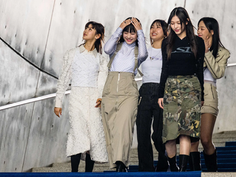How AI is Transforming Lives for the Visually Impaired
- Geeshan Mudalige
- Nov 27, 2024
- 2 min read
By G. Mudalige, Jadetimes Staff
G. Mudalige is a Jadetimes news reporter covering Technology & Innovation

Artificial intelligence (AI) is revolutionizing daily life for visually impaired individuals, offering unprecedented levels of independence and accessibility. For people like Louise Plunkett from Norwich, who lives with Stargardt disease, a rare genetic condition causing progressive vision loss, AI tools are more than innovative; they are life-changing. Louise has turned to AI-powered tools like "Be My AI" to navigate her world with greater ease, using its capabilities to describe images, identify objects, and even read ingredients on food packaging.
The Be My AI application, developed by the Danish company Be My Eyes, utilizes advanced AI to provide visually impaired users with detailed descriptions of images. While some users appreciate its precision, others find the descriptions overly elaborate. Louise notes that while the tool offers helpful insights, its tendency to provide poetic interpretations can sometimes overshadow the need for straightforward information. Despite these nuances, the app has gained traction, with users leveraging it for tasks like understanding images in WhatsApp groups, a functionality that avoids the need to rely on others for assistance.
The app builds upon Be My Eyes' original service, which connected visually impaired individuals with human volunteers for real-time visual support. Although the AI-powered tool is gaining popularity, the human connection remains a vital aspect of the service. Many users, especially older individuals experiencing vision loss, still prefer the familiarity and accuracy of human interaction, underscoring the complementary nature of AI and human support.
Beyond image recognition, AI-powered innovations like the WeWalk cane are expanding the horizons of accessibility. Equipped with obstacle detection, voice navigation, and live updates on public transportation, the WeWalk cane offers unparalleled freedom to its users. Gamze Sofuoğlu, a product manager for WeWalk who is visually impaired herself, emphasizes the device’s ability to provide accessible navigation in real-world settings. By connecting to a smartphone app, it can guide users to points of interest in thousands of cities without requiring them to interact directly with their phones, significantly enhancing independence.
Robin Spinks, head of inclusive design at the Royal National Institute of Blind People (RNIB), highlights the broader impact of AI on everyday life. Spinks, who has low vision, relies on AI tools like ChatGPT and Google Gemini to manage tasks ranging from summarizing information to organizing meetings. He notes that 2024 represents the rise of "multimodal AI," where systems integrate text, video, and image analysis to deliver comprehensive and meaningful assistance.
The advancements in AI technologies are transforming the landscape for visually impaired individuals, offering tools that empower them to navigate their environments, access information, and engage with the world more independently. These innovations demonstrate the potential of AI to break barriers, fostering greater inclusion and autonomy. As AI continues to evolve, its impact on accessibility is expected to deepen, making everyday tasks more manageable and lives more fulfilling for the visually impaired community worldwide.



























Commenti